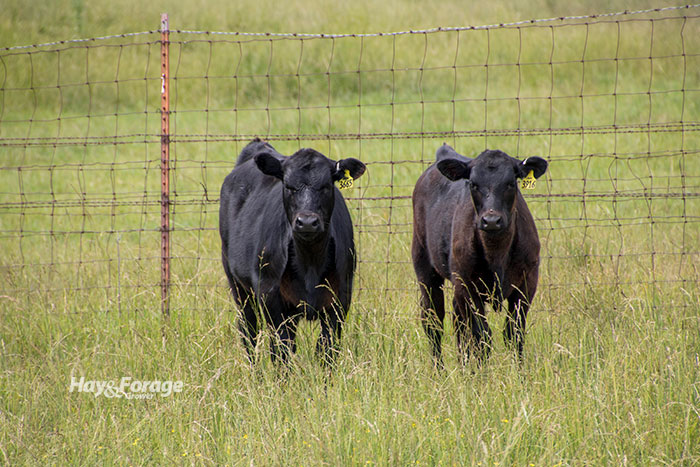Take the toxic out of tall fescue fields |
| By Amber Friedrichsen, Associate Editor |
|
|
 When producers in the Fescue Belt think about their forage systems, toxic endophyte likely comes to mind. Despite high productivity and good stand persistence, toxic endophyte-infected varieties of tall fescue have a reputation of interfering with livestock health and performance. Animals that consume too much of this type of forage can experience endophyte toxicosis, which can negatively affect their reproduction rates, milk production, weight gain, and weaning weights. Instead of gambling with endophyte toxicosis every year, consider renovating a portion of your tall fescue pastures this spring. Evaluate and renovate To decide if renovation is an appropriate management decision, Joe Horner, agricultural economist, and Craig Roberts, extension agronomist, with the University of Missouri Extension encourage producers to assess tall fescue fields and determine their level of risk. Different species of animals are more tolerant of toxic endophyte than others. “Infection levels should be less than 10% – preferably zero – for dairy cattle and expensive horses,” Horner and Roberts advise. “For beef cattle and small ruminants, endophyte levels should be less than 25%.” Collect forage samples and have them sent to a lab for analysis. If tests show high levels of endophyte, it may be best to remove the toxic fescue and replace it with a novel-endophyte variety. Horner and Roberts suggest native warm-season grasses or cool-season grasses like perennial ryegrass, orchardgrass, and bromegrass are suitable options as well. The spray-smother-spray method is an effective approach to pasture renovation. Begin this process in late spring or early summer by applying herbicide to kill an existing stand of toxic fescue. Next, plant a smother crop in the summer or winter, such as sudangrass or pearl millet. Then administer another round of herbicide before seeding the replacement forage. Horner says producers can omit the smother crop step, but they must still designate a waiting period between herbicide applications. With that said, the agricultural economist recommends incorporating a smother crop for the best results. “It’s not a simple and easy process but real opportunities exist,” Horner asserts. “If producers are willing to put in the time and make major changes, it’s a good long-term investment.” Costs and benefits University of Missouri Extension estimates net renovation expenses to be approximately $354 per acre when a summer smother crop is used, $497 per acre if a winter smother crop is used, and $357 per acre if a smother crop is not planted. These numbers reflect the cost of seeding a novel-endophyte variety and include the cost of pasture preparation and idling land during the renovation process. To justify these costs, Horner and Roberts note that animals grazing renovated pasture tend to have improved reproduction rates and weaning weights, and farmers can expect annual returns of as much as $198 per cow. Depending on a system’s stocking rate, this can equate to 5% to 18% return on investment per year. “If producers properly maintain a renovated pasture, they can anticipate pastures to be free from harmful endophytes for about 20 years. However, some renovated pastures have lasted longer,” Horner states.  Amber Friedrichsen Amber Friedrichsen served as the 2021 Hay & Forage Grower editorial intern. She currently attends Iowa State University where she is majoring in agriculture and life sciences education-communications and agronomy. Friedrichsen grew up on her family’s diversified crop and livestock farm near Clinton, Iowa. |
